Indiana limestone has seldom been more imposing:
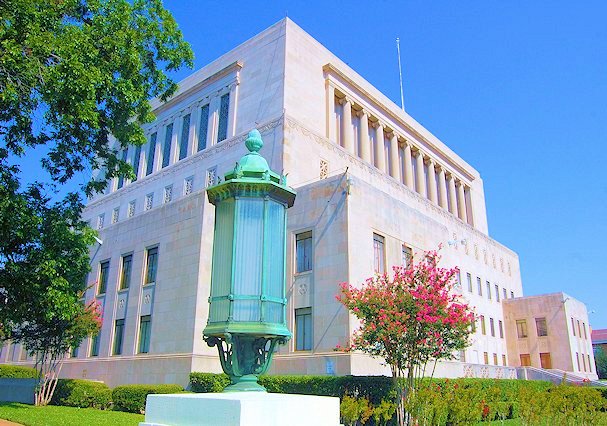 The Masonic Temple on Henderson Street at Lancaster Avenue is as formidable as any structure in Fort Worth.
The Masonic Temple on Henderson Street at Lancaster Avenue is as formidable as any structure in Fort Worth.
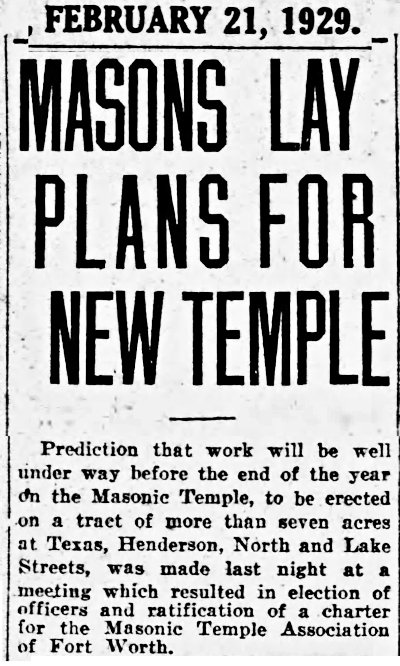 On February 21, 1929, just six weeks after the Moslah Shrine mosque at Lake Worth was destroyed by fire, Shriners and Masons announced plans to build a new temple on Henderson Street downtown.
On February 21, 1929, just six weeks after the Moslah Shrine mosque at Lake Worth was destroyed by fire, Shriners and Masons announced plans to build a new temple on Henderson Street downtown.
 On September 10, 1930 local Masons met at the South Side lodge on Magnolia Avenue to inspect the plans for the new temple. Architect was fellow Mason Wiley Clarkson. Clip is from the September 12 Dallas Morning News.
On September 10, 1930 local Masons met at the South Side lodge on Magnolia Avenue to inspect the plans for the new temple. Architect was fellow Mason Wiley Clarkson. Clip is from the September 12 Dallas Morning News.
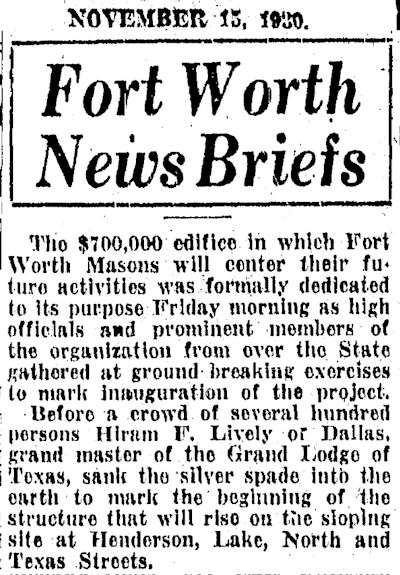 On November 14 Masons broke ground for the $700,000 ($10 million today) temple (just two weeks after the cornerstone was laid for Clarkson’s First United Methodist Church five blocks away).
On November 14 Masons broke ground for the $700,000 ($10 million today) temple (just two weeks after the cornerstone was laid for Clarkson’s First United Methodist Church five blocks away).
 In May 1931 work began on the temple, the cost of which had risen to $1 million ($15 million today). The clip indicates that six thousand Masons would use the temple. Fort Worth’s population in 1930 was 163,447.
In May 1931 work began on the temple, the cost of which had risen to $1 million ($15 million today). The clip indicates that six thousand Masons would use the temple. Fort Worth’s population in 1930 was 163,447.
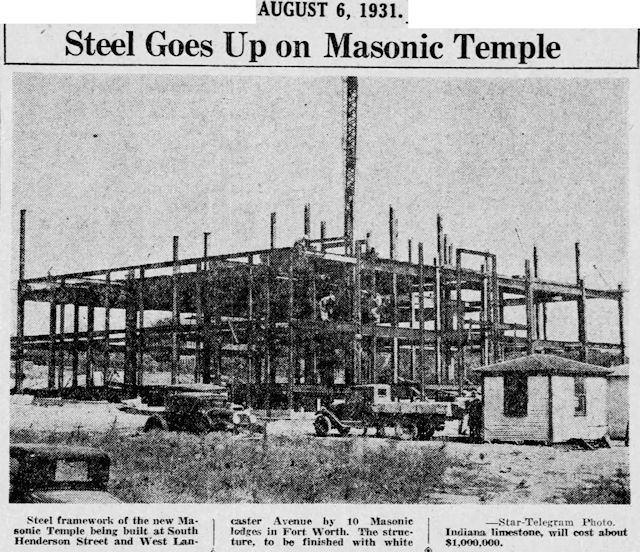
The building’s steel skeleton was taking shape in August 1931.
 Clip is from the September 27, 1931 Dallas Morning News.
Clip is from the September 27, 1931 Dallas Morning News.
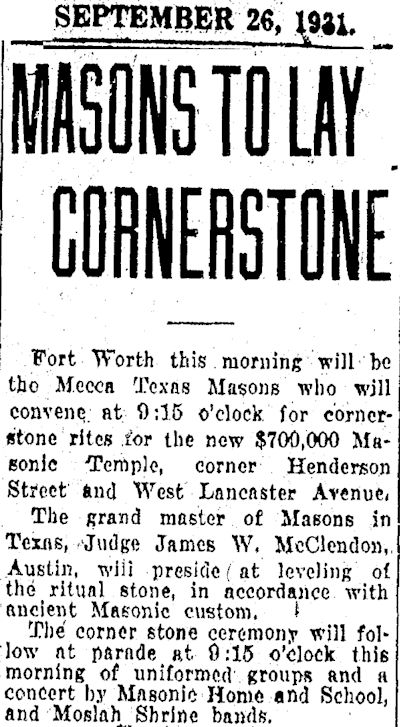 The cornerstone of the temple was laid on September 26, 1931, the cost again estimated at $700,000 ($10 million today). Note that a concert was presented by the Masonic Home and School.
The cornerstone of the temple was laid on September 26, 1931, the cost again estimated at $700,000 ($10 million today). Note that a concert was presented by the Masonic Home and School.
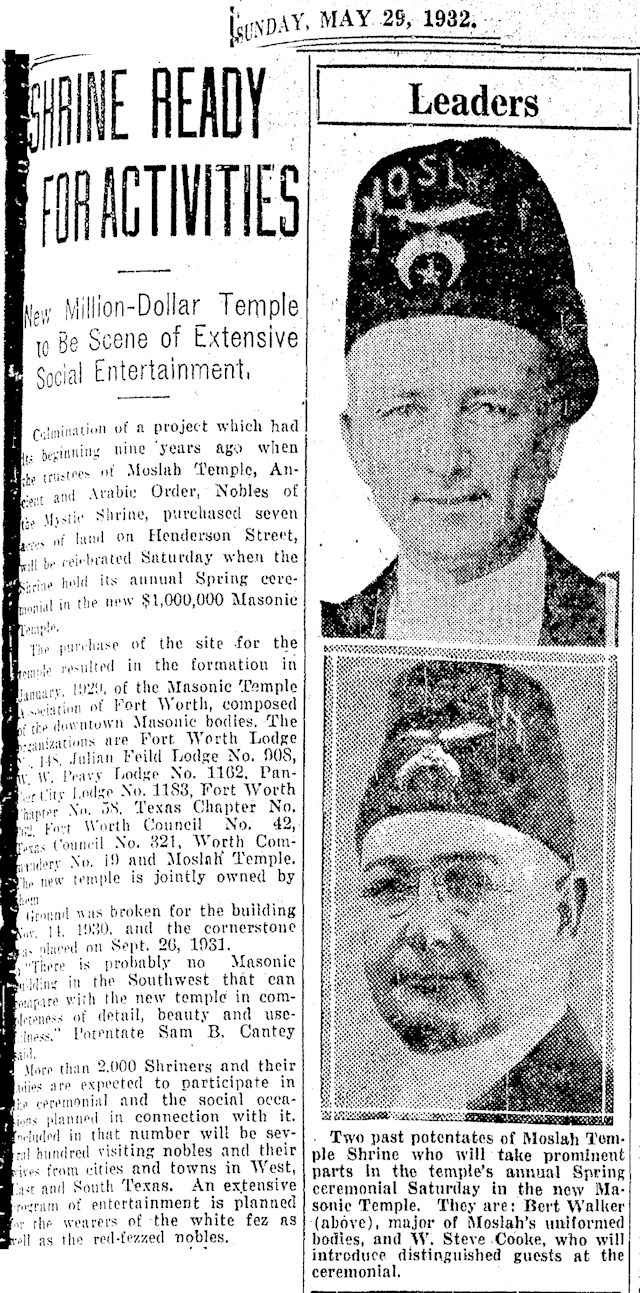 The temple was completed in 1932. One of its first events was the Masons’ annual spring “ceremonial.”
The temple was completed in 1932. One of its first events was the Masons’ annual spring “ceremonial.”
 On September 20, 1931 the Dallas Morning News provided some history of Masonry in Fort Worth. The first lodge, Lodge 148, was chartered in 1855. At first members met above a tavern operated by Lawrence Steel on the town square. But the lodge soon built a small building in the block bounded by East Belknap, Grove, East Bluff, and Jones streets (a historical marker at West Belknap and Houston streets says the building was located there). The lodge met on the second floor. The ground floor was used for school classes and church services. The lodge’s first master was Julian Feild.
On September 20, 1931 the Dallas Morning News provided some history of Masonry in Fort Worth. The first lodge, Lodge 148, was chartered in 1855. At first members met above a tavern operated by Lawrence Steel on the town square. But the lodge soon built a small building in the block bounded by East Belknap, Grove, East Bluff, and Jones streets (a historical marker at West Belknap and Houston streets says the building was located there). The lodge met on the second floor. The ground floor was used for school classes and church services. The lodge’s first master was Julian Feild.
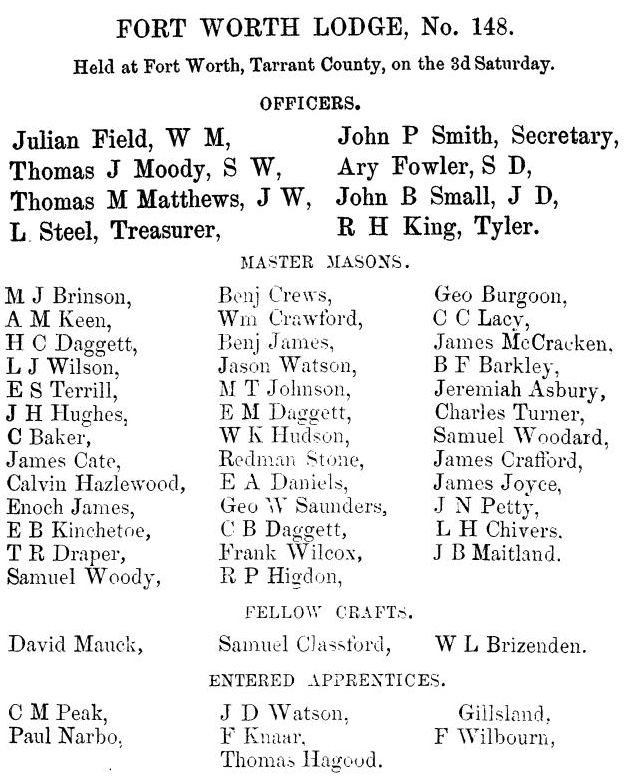
A roster of early members of Lodge 148 was a who’s who of Fort Worth. To show how active Masons were in early Fort Worth, these members are treated elsewhere at Hometown by Handlebar: Carroll M. Peak, Julian Feild, David Mauck, Lawrence Steel, John Peter Smith, E. M. Daggett, Henry Clay Daggett, Charles B. Daggett, Sam Woody, Ed S. Terrell, Middleton Tate Johnson, Matthew Jackson Brinson, George Saunders, Charles Turner, A. Y. Fowler. (Clip from Proceedings of the Grand Lodge of Texas, From Its Organization in . . . 1837 . . . to . . . 1857, 1857.)
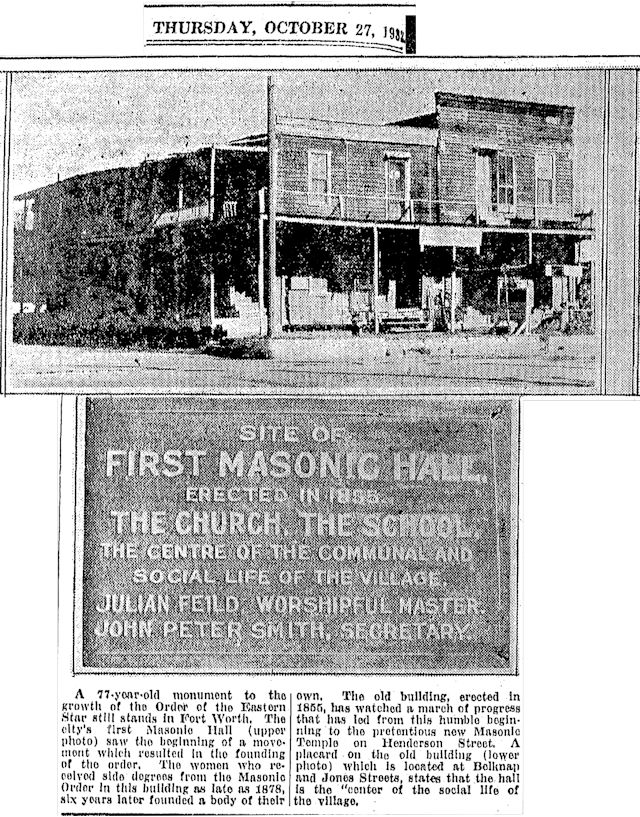 This Star-Telegram clip shows that the original 1855 Masonic lodge building was still standing in 1932. Pity that building could not have been moved out of the way of progress and preserved as the oldest public structure in Fort Worth.
This Star-Telegram clip shows that the original 1855 Masonic lodge building was still standing in 1932. Pity that building could not have been moved out of the way of progress and preserved as the oldest public structure in Fort Worth.
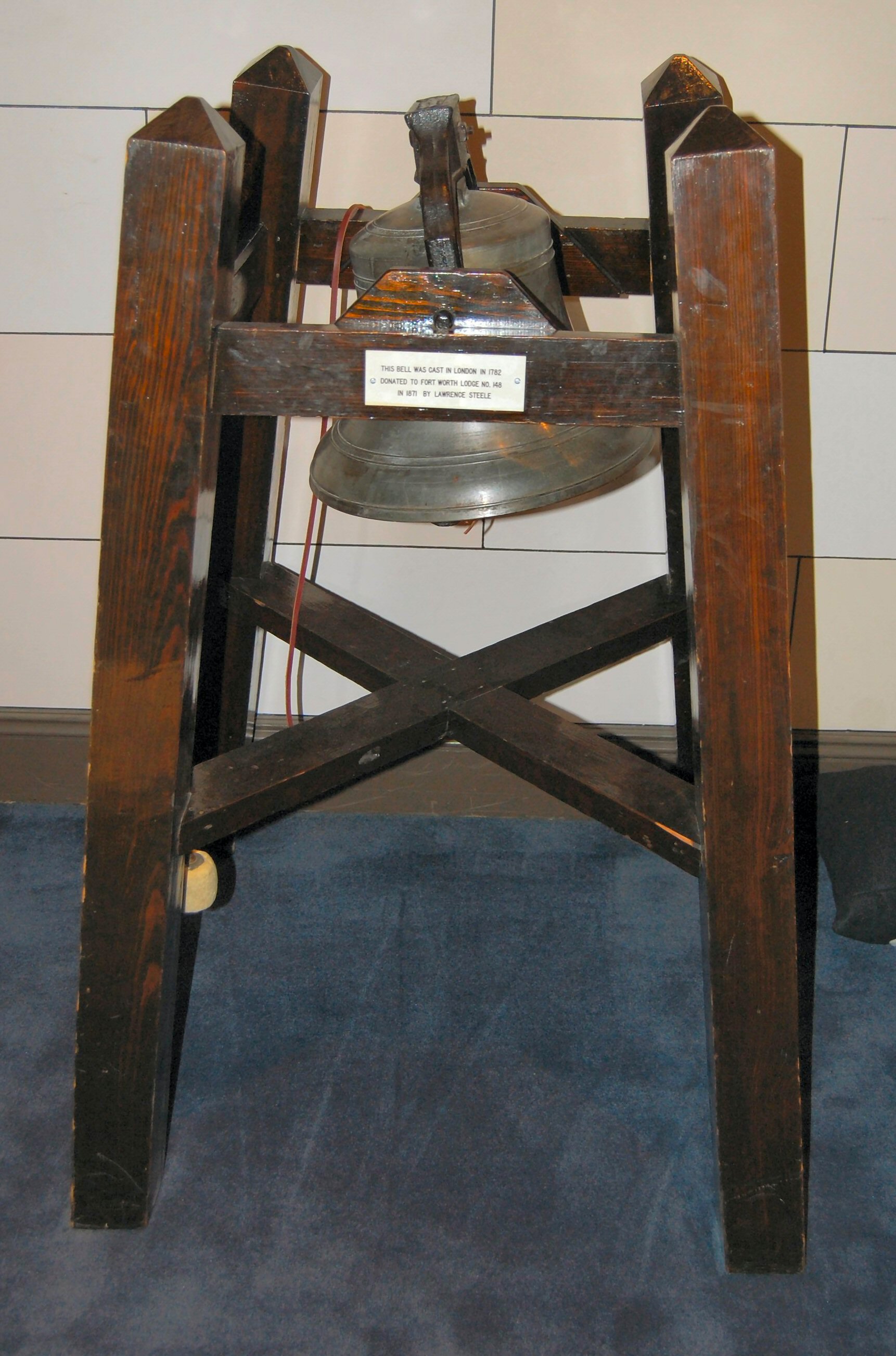 Among the treasures in the 1932 temple is the Masonic bell (cast in 1782) from that first lodge hall.
Among the treasures in the 1932 temple is the Masonic bell (cast in 1782) from that first lodge hall.
Some more views of the Masonic Temple (now called the “Masonic Center”):
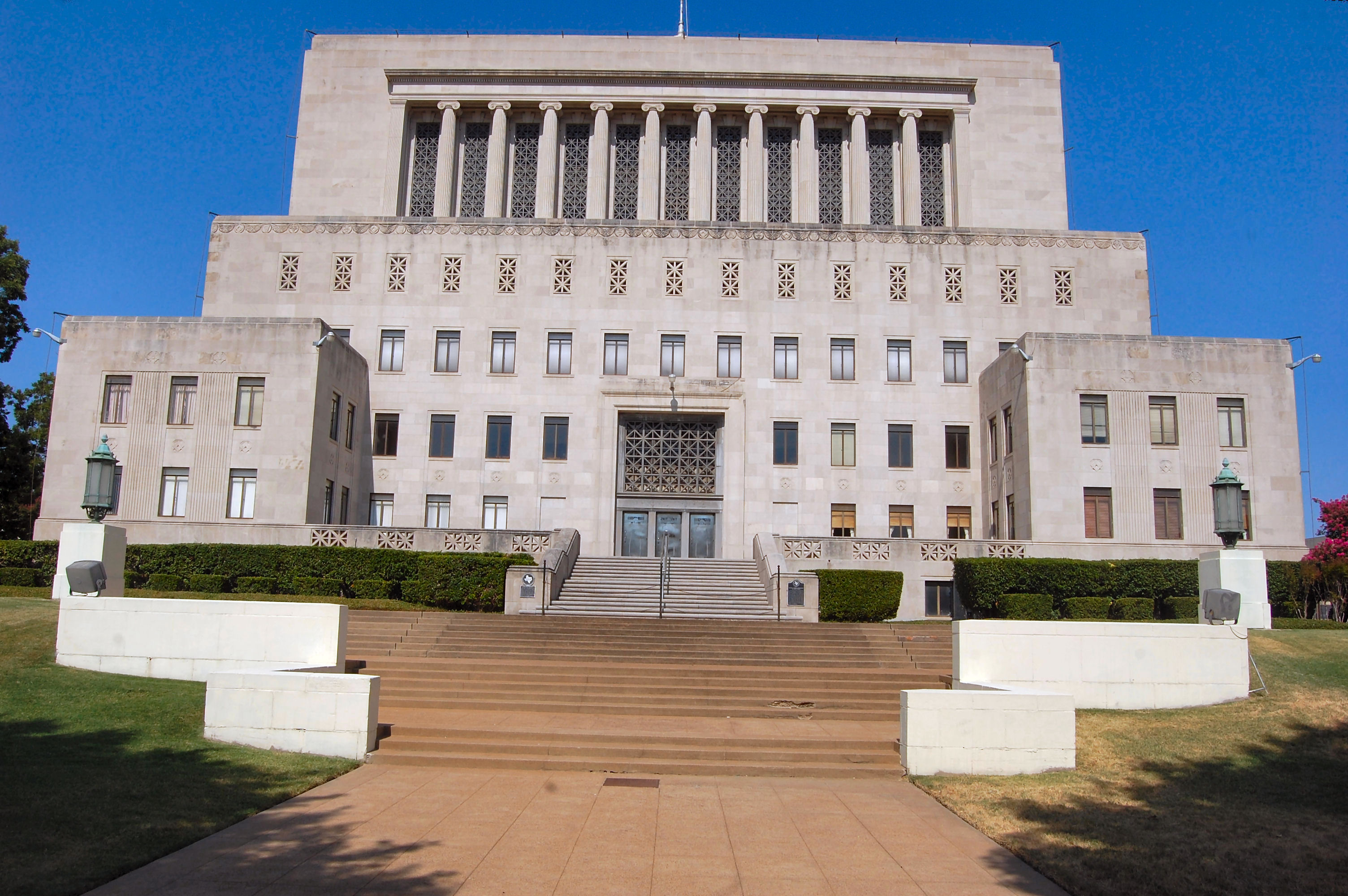 Architecturally the building is “a little bit country, a little bit rock and roll”: stepped like an Egyptian ziggurat, some art deco elements, . . .
Architecturally the building is “a little bit country, a little bit rock and roll”: stepped like an Egyptian ziggurat, some art deco elements, . . .
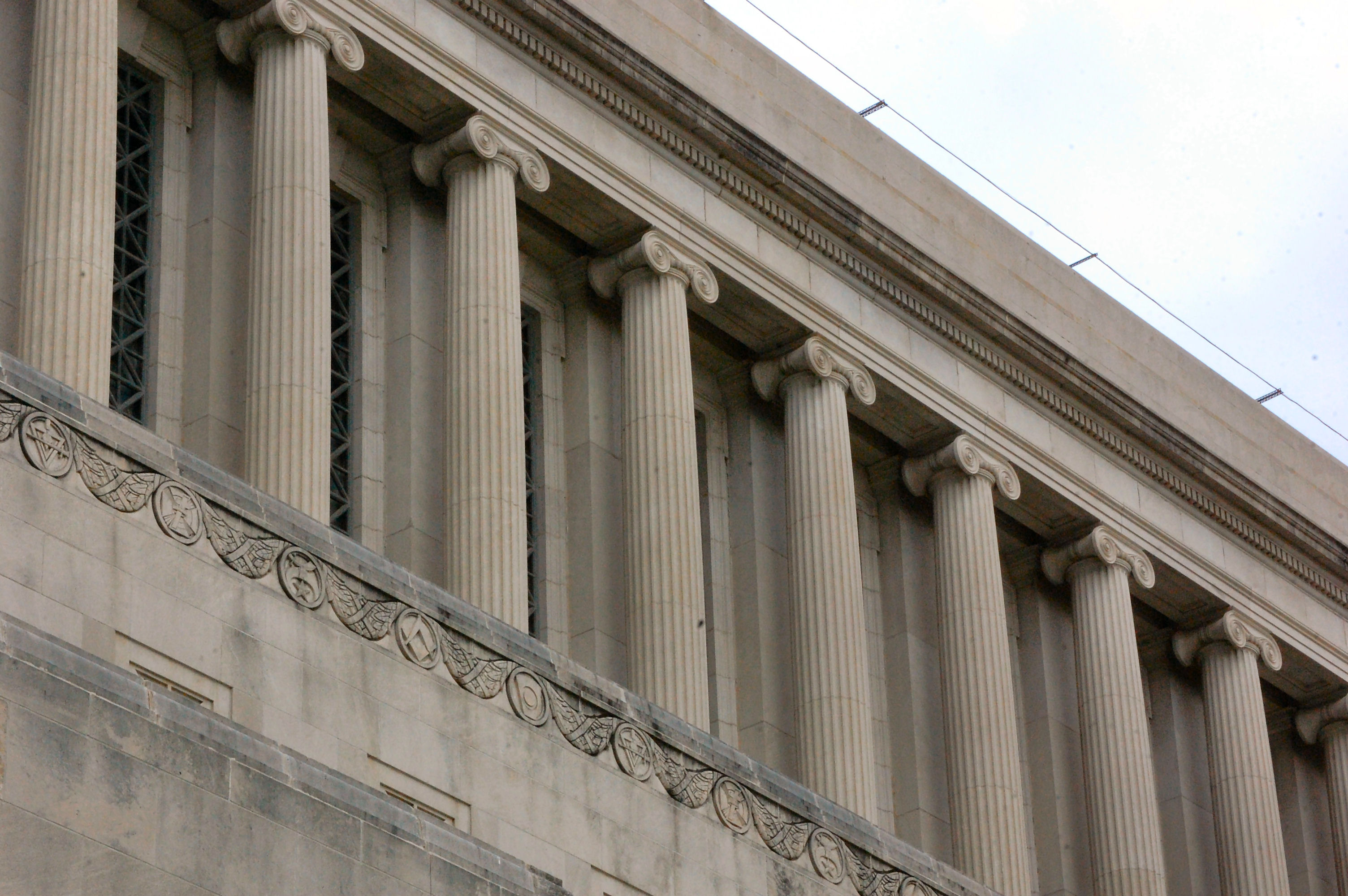
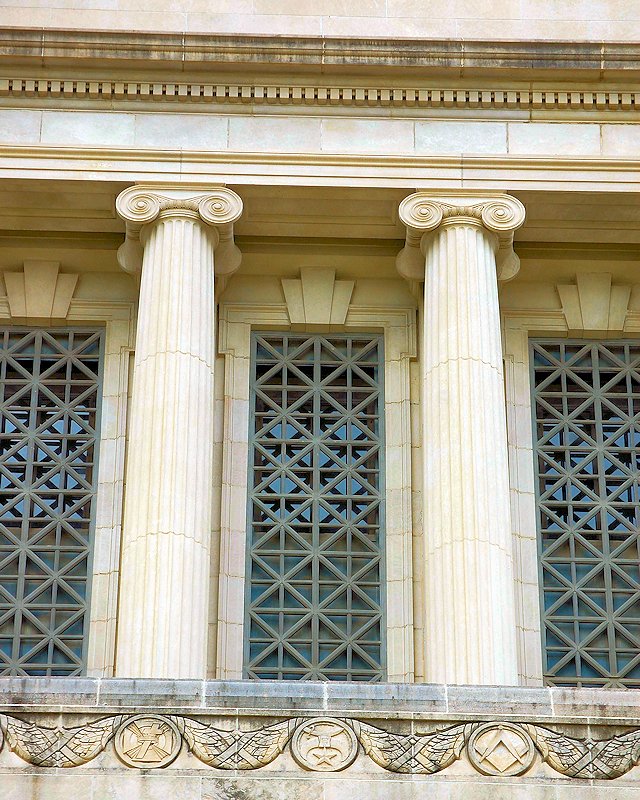 . . . some classical elements, as in these keystones, dentil molding, and ionic columns.
. . . some classical elements, as in these keystones, dentil molding, and ionic columns.
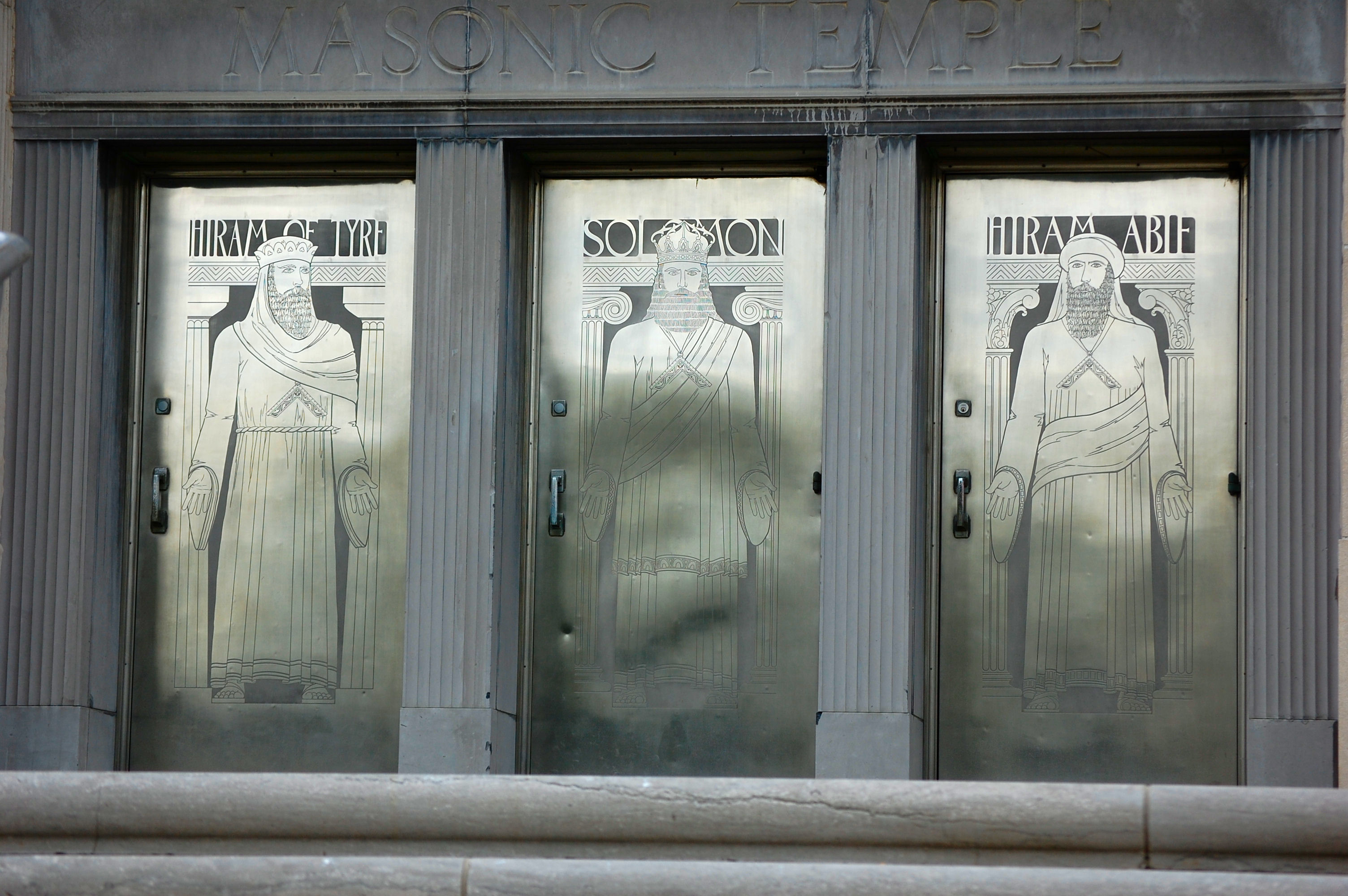 Main entrance doors.
Main entrance doors.


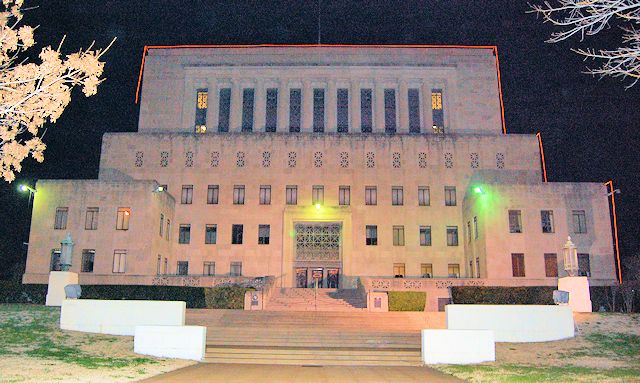







Thanks for the article. My brother-law was a Mason who went on to become a Shriner and helped put the electrical work together for the Houston Shriner’s Circus and Children Hospital.
I remember noticing that building for the first time in the mid-1950s. I was under 10 years of age at the time, but the building intrigued me. I asked my mother if we could go inside, and she just laughed and said “No one but the Masons can go inside. You have to be a member.” Well sir, that hooked me right then and there. About 25 years later I attended a meeting there. It is a real Fort Worth treasure.
Lovely details. And some weird details, thanks. We should probably revise our nickname for this 30′
s monolith, since we’ve seen it only from our car-we call it “the Albert Speer building”
.
An apt comparison, Tom Campbell. Wish we had time-lapse film of that edifice rex being built. Fortunately for Cowtown, Clarkson’s buildings have fared far better than Speer’s did.
I live in Colorado now, but I am a permanent (endowed) member of Fort Worth Lodge #148. I am very proud to call this Lodge home, and it is definitely still in operation and very active. Look them up on Facebook and arrange a visit.
Mr. Hagood, a lodge member, gave me a tour of the building when I was researching. That’s when I took the photo of the bell (and the Mighty Mites bench).
I’ve worked in this building for nearly 33 years.
Very grand looking structure. Have you been inside? I have only seen it up close a couple of times. Do the Masons still hold meetings there?
It is indeed. I got a brief tour when I took the photo of the bell. The interior is lavish. I felt like Indiana Jones.
Clunky, graceless pseudo-ziggurat; one of our least attractive attractions. Still, it would probably stand up to a moderate hurricane!
I look at the moderne boxes of the 1930s like I do the cars of the 1950s: not as graceful as those that came before (cars of the 1930s) but more graceful than those that came later (cars of the 1960s-). The style of the temple, the Kress Building, and Hedrick’s city hall and public library may not be as engaging as the style of Sanguinet and Staats and the style of other buildings by Clarkson and Hedrick, but to me it’s more engaging than the blue glass stalagmites that came later.